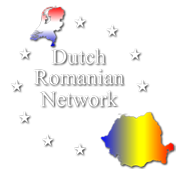Newsletter June-July 2023

DRN welcomes Cicada Technologies
Cicada Technologies: a European software provider with offices in the Netherlands and Romania, specializing in complete, user-friendly and easy-to-navigate digital solutions.

They provide customized digital solutions for companies looking to automate their daily operations, reduce costs and improve core processes.
Headquartered in Cluj-Napoca, their Dutch office operates under the added appellation Dutch Office Cicadatech in The Hague where Adalin Oles is in charge.
For a detailed profile also check out the members page >>>
For more information: tel.+31 6 1376 6378 or dutch.office@cicadatech.eu.
Website www.cicadatech.eu
DRN will award upgrade to Romanian companies
Precisely because the Netherlands is the largest investor in Romania and Romanian economy is also becoming more (internationally) competitive, it will also support Romanian 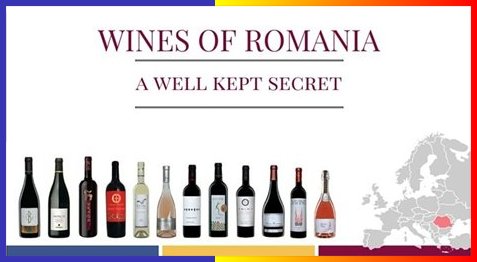 entrepreneurs interested in investing in the Netherlands.
entrepreneurs interested in investing in the Netherlands.
Partly for this reason, this newsletter will henceforth appear in a trilingual version.
 To this end, Dutch importers will also be made aware of niches in Romanian supply, such as, for example, the renowned Romanian wines (Romania is the largest wine country in Southeastern Europe. The international wine press has praised the quality of wines produced in Romania over the past few years. “Of all the wine regions around the Black Sea and in the Balkans, Romania is THE country from which we can expect the greatest potential”, writes Hugh Johnson in his famous ‘Wine Atlas’.
To this end, Dutch importers will also be made aware of niches in Romanian supply, such as, for example, the renowned Romanian wines (Romania is the largest wine country in Southeastern Europe. The international wine press has praised the quality of wines produced in Romania over the past few years. “Of all the wine regions around the Black Sea and in the Balkans, Romania is THE country from which we can expect the greatest potential”, writes Hugh Johnson in his famous ‘Wine Atlas’.
 Currently, Romania is one of the 10 largest wine producers in the world. Also not to be left unmentioned is the cosmetic manufacturer Gerovital. In the 1967s, Farmec purchased or entrusted the first anti-aging formula (cream) called Gerovital. Gerovital Cream is the world’s first anti-aging formula created by Prof.Dr. Gerovital. Ana Aslan , who discovered the healing benefits of procaine through long-term treatment in small doses.
Currently, Romania is one of the 10 largest wine producers in the world. Also not to be left unmentioned is the cosmetic manufacturer Gerovital. In the 1967s, Farmec purchased or entrusted the first anti-aging formula (cream) called Gerovital. Gerovital Cream is the world’s first anti-aging formula created by Prof.Dr. Gerovital. Ana Aslan , who discovered the healing benefits of procaine through long-term treatment in small doses.
Of course, Romania has plenty to offer in multiple sectors. But the aforementioned examples were mentioned because they are relatively unknown, and at the same time there is a large consumer market for them.
Romanians in the Netherlands – Demography & Integration
A wide variety of numbers are cited about the number of Romanians permanently residing in the Netherlands. So let’s put an end to that, relying on the December 31, 2022 figures from the Central Bureau of Statistics.
It is noteworthy that our southern neighbor with 11.6 million inhabitants has double the number of Romanian inhabitants (over 90,000), where perhaps the language plays a role, but in terms of population density both countries are similar.
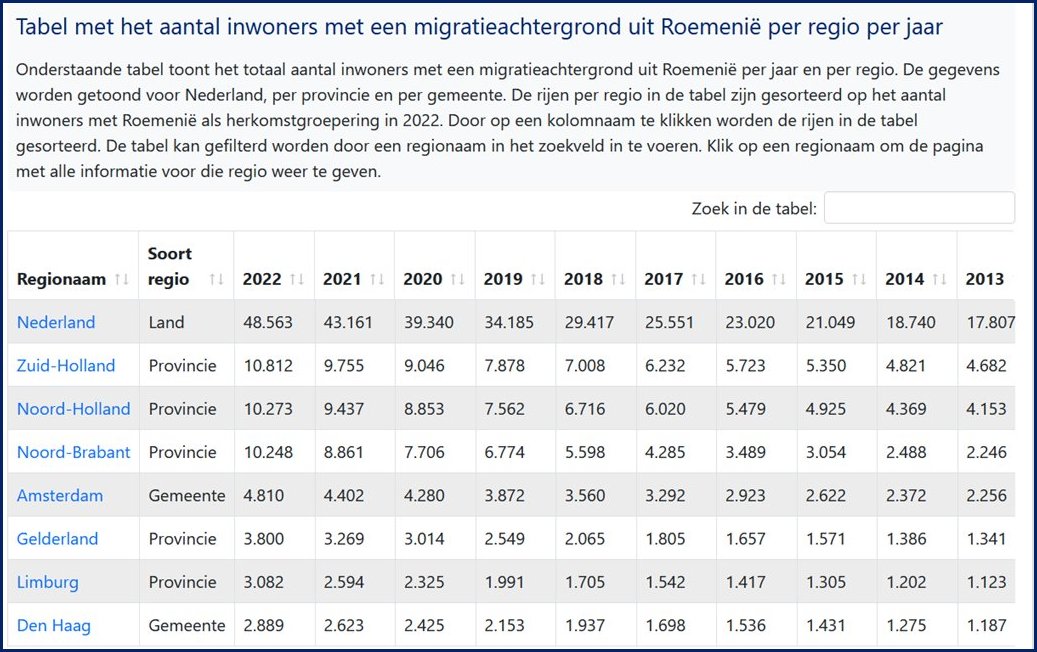
An example of integration: Rompro Foundation
“The organization of ROMPRO made a very pleasant impression on me. I have attended several events and was always pleasantly surprised. Such great participation and especially such a positive attitude I did not expect.
 Without exception, the activities were very well organized, with the participation of Romanians, Dutch and other nationalities alike.
Without exception, the activities were very well organized, with the participation of Romanians, Dutch and other nationalities alike.
The Netherlands undoubtedly needs an established Romanian organization, made by Romanians for Romanians – and not only that.
On the one hand, more and more Dutch people are coming into contact with Romanians based in the Netherlands and I think it is very important that they get to know better some aspects of the rich Romanian culture.
On the other hand, it is important to have a foundation where Romanians can enjoy their traditions together, especially since many of the activities organized by ROMPRO also provide a platform for the younger generation (often of Romanian-Dutch origin) to stay in touch with the traditions of their parents,” said Jan Willem Bos – translator and publicist.
For more information: https://rompro.nl.
“Service Announcement” for our sponsors and members
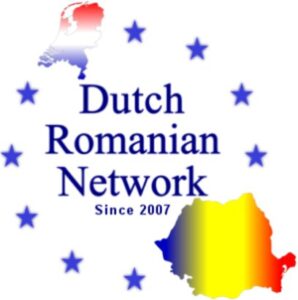 In our last newsletter we reported that Natasja Hart our treasurer and secretary unfortunately had to resign her positions as of January 1 due to the effects of lung covid. One of the consequences was that we had to reimagine our (financial) membership records in about two years. As a result, for a substantial portion of our members and sponsors, the invoice for your contribution may appear later, and we do not rule out several years in some cases. We apologize in advance for this and ask for your understanding as it is a case of force majeure.
In our last newsletter we reported that Natasja Hart our treasurer and secretary unfortunately had to resign her positions as of January 1 due to the effects of lung covid. One of the consequences was that we had to reimagine our (financial) membership records in about two years. As a result, for a substantial portion of our members and sponsors, the invoice for your contribution may appear later, and we do not rule out several years in some cases. We apologize in advance for this and ask for your understanding as it is a case of force majeure.
We will host another series of meetings in the fall, so you will be hearing from us.
International Labor Market Sector
Post Craiova

As most readers of this Post Craiova will know, there is an almost constant flow of visitors to our Craiova facility. Those visits are helpful and enjoyable. We always see as an effect a kind of acceleration in terms of mutual understanding of the development work and, subsequently, an acceleration in the output of the teams.
The frequency of visits often depends on the client’s preference. For some that is eight times a year, for others much less. The record currently stands at 42 individual visits by a single client, and this number is still rising. Soon we will also have the first anniversary of a client with whom we have worked continuously for 20 years and who has visited only a few times in all those years.
It also often proves fun and useful for client employees to meet and exchange experiences with “colleagues” from other NetRom clients, often from a completely different industry.
An extremely interesting topic that I invariably bring up at dinner parties in the evenings is the question of whether the current huge labor market shortage in almost all sectors is just a part of cyclical cycles or this time of a permanent nature. Many of our guests have strong opinions about this. This makes sense, as it is extremely essential for almost every organization to anticipate future movements in this area. Schiphol is a grim example of how things can go wrong if you don’t do that adequately. Personally, I am convinced that labor market shortages are permanent. That means HR policy is due for a complete rethink. Those who do not move with the new reality will irrevocably fall behind.
In the Netherlands, the government is also currently engaged in another attempt to regulate the labor market and reduce the number of flex workers and self-employed workers. The question, however, is whether politicians can keep up with the pace of change. NetRom encounters the internationalization of the labor market on a daily basis. We have clients who manage development teams on all continents simultaneously.
Just the other day I saw a striking example of a Polish freelancer – a brilliant project manager, by the way – managing a number of international teams from Madagascar for a Dutch client on behalf of an American end client. I give it to the legislature to find the right balance between tax, pension and social insurance on these types of 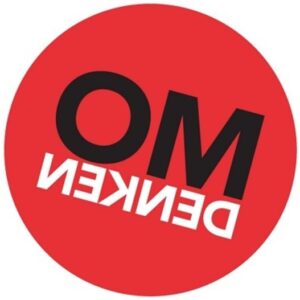 structures. Incidentally, I do venture to doubt whether this kind of fully remote working is sustainable in the long run. In our knowledge-intensive environment, high-output development teams work collaboratively on product development. For that, there is simply no better place than together in the office.
structures. Incidentally, I do venture to doubt whether this kind of fully remote working is sustainable in the long run. In our knowledge-intensive environment, high-output development teams work collaboratively on product development. For that, there is simply no better place than together in the office.
Either way, the new job market requires a complete rethink on the part of employers. That consists of employers realizing that employees are a scarce resource and that you must do everything in your power to get people in and keep them. HR policies thus become a decisive competitive advantage over other employers.
IT Sector
Analysis: how the war in Ukraine changed the IT market in Romania and the region
The war in Ukraine reset the local IT market – from the increase in the shortage of programmers in the first 7 months after the outbreak to the sudden drop in projects, a situation that forced forced layoffs and put pressure on talent retention, but also on accelerated developments in certain segments, according to an analysis by local company OVES Enterprise.
 “The IT market has experienced major fluctuations over the past 16 months. While in March last year there were many projects on the market and a great need for programmers, now the demand for personnel has decreased, at the same time as the increasing pressure to contract new projects, which can retain talents in companies.
“The IT market has experienced major fluctuations over the past 16 months. While in March last year there were many projects on the market and a great need for programmers, now the demand for personnel has decreased, at the same time as the increasing pressure to contract new projects, which can retain talents in companies.
Moreover, last year Romanian companies took steps to hire and help programmers from Ukraine; now they have returned to recruiting on the local market, which is more expensive but has proved much more stable,” said Mihai Filip, CEO of OVES Enterprise, pointing out that if at the beginning of the war the shortage of programmers in the market was about 15% -20%, this increased to about 30% in September 2022. Then the number of projects declined, reducing the deficit. Currently, clients only pursue essential projects and developers are needed for niche technologies, in most cases companies that manage to find talent in the local market.
However, the war accelerated the collaboration and development of less common segments of the IT market, such as Defense, Cybersecurity and AI.
“During this period, the complexity of projects increased and more projects were developed in areas such as Cyber and AI. At the same time, many companies in the field of innovation and defense moved part of their business to Romania. In the coming years we will see an increase in the number of Romanian companies developing in this direction,” adds Mihai Filip.
For OVES Enterprise, the Defense sector is a priority in the coming years, projects in this segment now generate about 12% of revenue, a share that will increase every year.
Also, the companies that had collaborations with companies from Ukraine had to find other development partners, most of which turned to companies from Romania and Poland.
“Romania is currently a very important pawn in the global IT market and we must take advantage of this opportunity. Never in history have I been in a better position,” said Mihai Filip.
The unstable international political and economic situation also led to a change in strategy regarding market approach. IT companies are now emphasizing global diversification, that is, teams and offices in different parts of the world. OVES Enterprise also opened 2 offices in the US last year, in Silicon Valley and Washington DC, giving it access to high complexity defense projects. Investment in OVES Enterprise’s international expansion will reach about 500,000 euros by the end of this year.
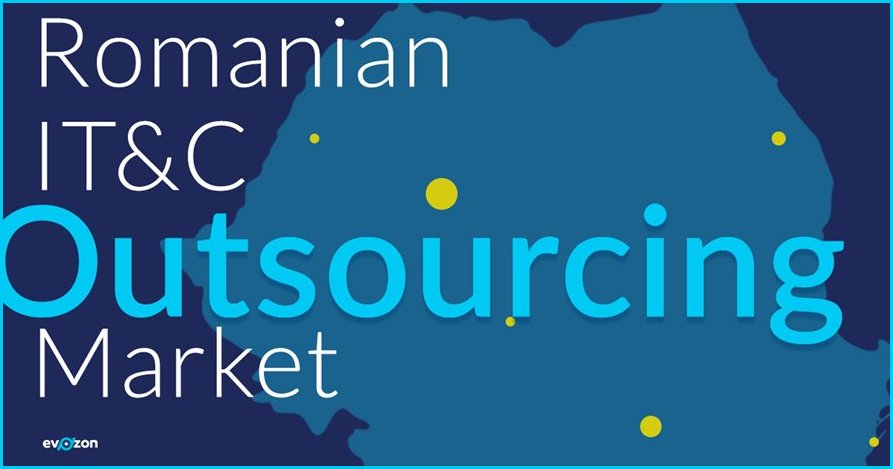
And cooperation and building partnerships can now be done within days, not 6-9 months, as was the case before the outbreak of war in Ukraine.
OVES Enterprise is a Romanian software development company founded in 2015 in Cluj-Napoca. As of 2019, OVES’ strategy included offering more complex software development services for projects in automotive, e-commerce, fintech, telecom, international government agencies, etc., becoming a technology partner for complex and technologically advanced projects. Currently, 80% of the company’s revenue is generated by projects outside Romania, integrating new technologies in artificial intelligence and big data. OVES Enterprise currently has more than 200 employees and offices in Romania, Germany, the United Arab Emirates and the US.
Sector Primary Infrastructure
On June 27, a new ferry service was launched that will connect the port of Constanța with the city of Poti in Georgia.
A new ferry service connecting Constanța with the coastal town of Poti in Georgia was opened last month, carrying passengers and goods.The new Constanta-Poti ferry line will be operated by Georgian company E60 Shipping.
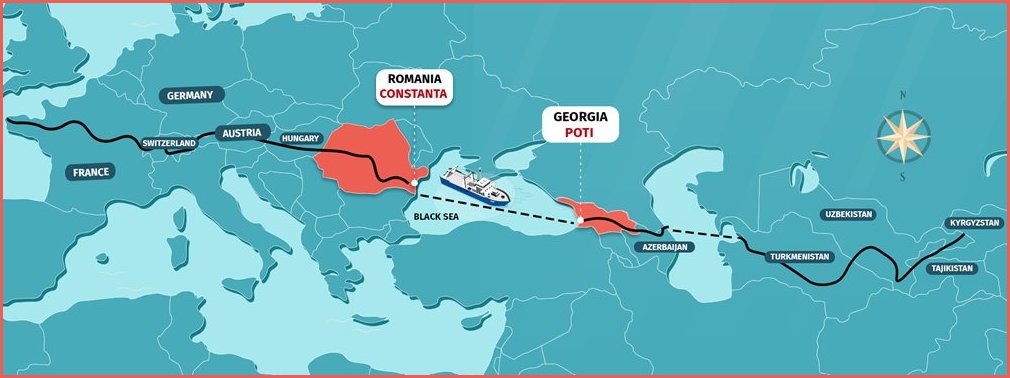
This is called the old European route E60, which connected the city of Brest in western France to the Irkeshtam Pass, which is now the border between Kyrgyzstan and China.
The first ship of this line left Constanța on June 27, 2023, arriving in two days later at the port of Poti in Georgia, located on the eastern shore of the Black Sea.
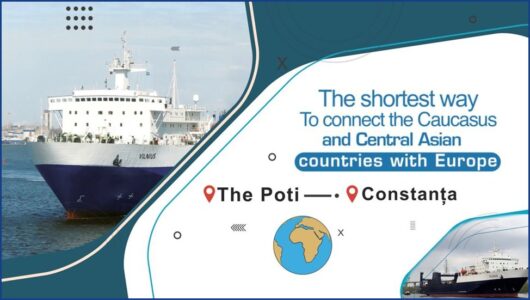 The new ferry route replaces the old UkrFerry transport line, which used to connect the Ukrainian port of Chornomorsk with the Georgian city of Poti.
The new ferry route replaces the old UkrFerry transport line, which used to connect the Ukrainian port of Chornomorsk with the Georgian city of Poti.
Chornomorsk, located near Odessa, a little further south, was one of the main destinations for the ferry services that sailed across the Black Sea to Georgia. Apparently, this race was suspended after the outbreak of war in Ukraine.
Under these circumstances, the ferry race between the Bulgarian city of Varna and the port of Batumi in Georgia remained the only option for crossing the Black Sea.
As a result of the 90% decrease in shipping traffic from Georgia due to the lack of alternative routes, E60 Shipping realized the need to launch new routes connecting Europe to the Caucasus.
The vessel is a passenger ship named M/v Vilnius, which weighs 22,341 tons. This is the ship that in the past connected the Ukrainian port of Chornomorsk with the city of Poti. In addition to passengers, cargo containers, cars and motorcycles can be loaded onto the ship. Passengers can be accommodated in standard cabins or suites.
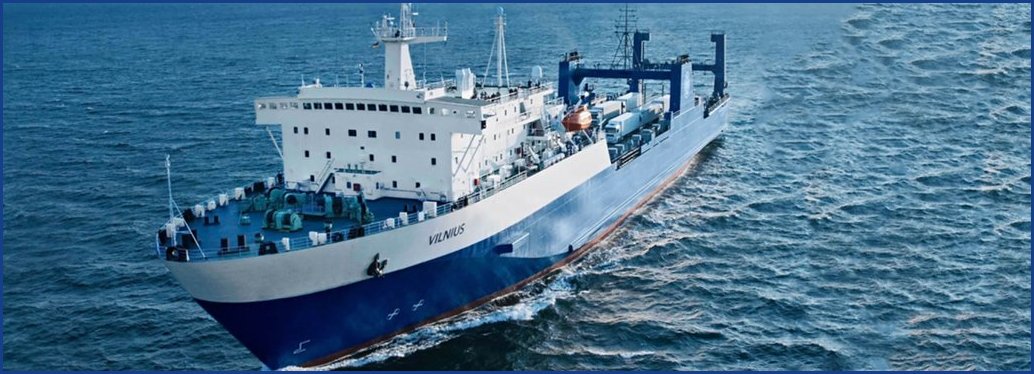
E60 Shipping plans to operate one trip per week in both directions, although dates may vary from week to week. The ticket price for a Constanța-Poti trip is 200 euros, and children between the ages of six and 12 receive a discount of 80 euros. Children under the age of six are free.
The rate for apartments is higher, an extra 200 euros must be paid over the basic rate for such a cabin with a double bed for two people, and for four-person cabins the rate is 300 euros higher.
The cost of transporting a car is 500 euros and the cost of transporting a motorcycle is 300 euros.
Prices and conditions freight traffic c.q. container traffic are available on request.See https://e60shipping.com
TAROM is flying at a loss for the 15th year: minus 62 million lei (€12,525,900) in 2023
TAROM is turning a loss again this year. It is the 15th year the airline has failed to make a profit. The past three years, marked by the COVID-19 pandemic that hit the aviation industry hard, have provided the company with the state support it needs to survive.
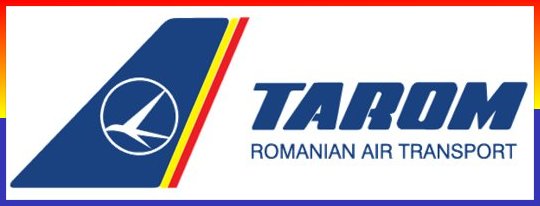 The estimated gross loss for this year in the income and expenditure budget, approved by the company’s shareholders early this month, is 62.4 million lei, according to the bill consulted by Economica.net.
The estimated gross loss for this year in the income and expenditure budget, approved by the company’s shareholders early this month, is 62.4 million lei, according to the bill consulted by Economica.net.
The loss is 71% lower than the approved result for 2022, a loss of 216 million lei. In the base case, TAROM becomes profitable in 2024 and cash flows should turn positive this year.
TAROM’s revenue for this year is estimated at over two billion lei, a 33% increase over the preliminary/realized for 2022, this is also reflected in the budget of revenue and expenses.
Investments of 115.5 million lei are planned for this year, down from the 388 million lei approved a year ago for 2022. About 33 million lei will be provided from its own sources and another 82.5 million lei from investment credits.
The average monthly income per employee (lei/person), determined on the basis of salary costs, recalculated according to the annual state budget law for the year 2023 – Law No. 368/2022, in the amount of 10,592.85 lei/employee, was estimated to increase by 18.03% compared to the provisional/achieved in 2022, the document also states.
“In accordance with the forecasts of revenues and expenses planned in the draft budget of revenues and expenses for the year 2023, the EBITDA margin (calculated according to IFRS reports) is estimated at a positive value of 174,099.18 thousand lei, this reflects the estimates related to the operational profitability of the company cash generators,” the budget description also states.
TAROM’s future depends on state aid, worth 190 million euros, which has yet to be approved by the European Commission.
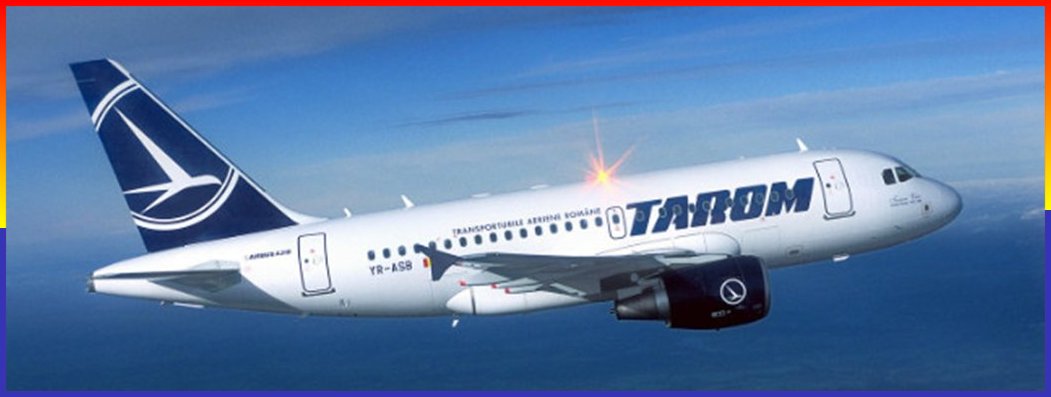
“Providing individual state support for restructuring is the only solution for the success of TAROM’s restructuring and the company’s medium- and long-term profitability,” the quoted document also states.
The Ministry of Transportation allocated 12.5 million lei to TAROM as the state’s contribution to social capital. The money will be used to repay installments and interest related to the state-guaranteed loan taken out with Banca Transilvania, based on the European Commission’s decision.
Transportation sector
GOBO Group buys Romanian operations from Cargofoor
Lanaken-based Belgian group GOBO, through its subsidiary Wijsen Logistics, bought 52% of the capital of the company Cargofoor, which specializes in tanker transport, with the documents also being signed in Romania.
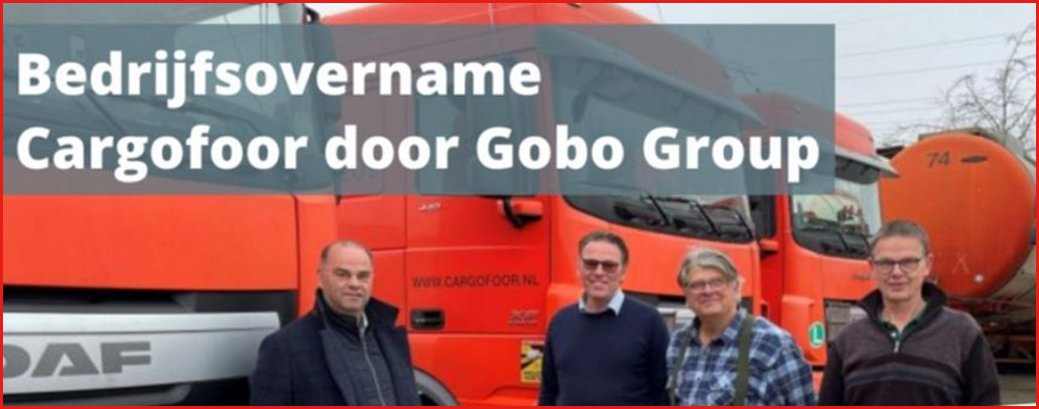
Cargofoor, based in Maastricht and with a subsidiary in Ploiesti, specializes in tanker transport (chemicals, oil and fats) mainly in the countries of the Balkans and Eastern Europe. Cargofoor has 30 employees. The GOBO Group will now take over the company’s personnel, operations and vehicles. GOBO has been in the field of tanker transport for many years. The transport company Cargofoor BV was founded in 1964. In 1995, it started the subsidiary Cargofoor SRL in Romania, in Ploiesti. With branches in Lanaken (Belgium), Maastricht (Netherlands), Selfkant (Germany), Herzogenrath (Germany), Senec (Slovakia) and Ploiesti, the GOBO Group will have a fleet of 150 tractors, 90 tankers and 170 trailers after this transaction. In total, the group will have 260 employees and annual sales of 42 million euros.
Energy Sector
Petrom has found new sources of crude oil and natural gas in Romania. The greatest discoveries of decades
OMV Petrom, the largest integrated energy company in Southeastern Europe, announced that it has discovered new crude oil and natural gas resources in the Oltenia and Muntenia regions of southern Romania. Cumulatively, the discoveries amount to more than 30 million barrels of extractable resources, the equivalent of three-quarters of OMV Petrom’s production by 2022, the company said in a press release.
 Trial and test drilling of these three wells took place between June 2022 and April 2023. The company invested about 20 million euros in the exploratory drilling.
Trial and test drilling of these three wells took place between June 2022 and April 2023. The company invested about 20 million euros in the exploratory drilling.
One of OMV Petrom’s discoveries was in the Verguleasa exploration area, in the Oltenia region. The company has identified crude oil resources totaling about 20 million barrels of oil equivalent, representing OMV Petrom’s largest crude oil discovery in decades.
The discovery is located near another mining area, offering synergies that will help accelerate the start of production.
Another discovery took place in the Targoviște exploration perimeter, where crude oil reserves were identified for an estimated 6 million barrels. The trial works took place in April 2023 and those prepared prior to the operating development.
A third discovery was made in the Targu Jiu exploration perimeter and natural gas reserves of 7 million barrels were identified, equivalent to nearly a third of Romania’s natural gas production by 2022. A second well is already planned for next year and preparations for the connection are underway.
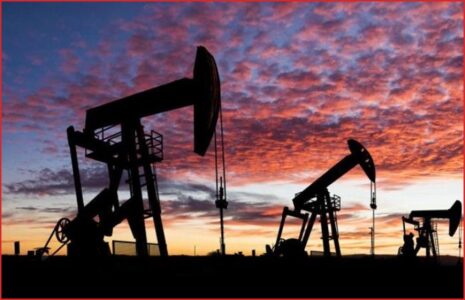 “Romania has been producing oil and gas for more than 150 years, and in these circumstances identifying new resources requires a significant effort. The new discoveries will contribute to reducing the decline of our production and to the continuity of supply of essential products for the economy,” said Cristian Hubati, member of the OMV Petrom Directorate, responsible for the Exploration and Production activity:
“Romania has been producing oil and gas for more than 150 years, and in these circumstances identifying new resources requires a significant effort. The new discoveries will contribute to reducing the decline of our production and to the continuity of supply of essential products for the economy,” said Cristian Hubati, member of the OMV Petrom Directorate, responsible for the Exploration and Production activity:
All discoveries are the result of the company’s exploration strategy, focused on opportunities near existing deposits, enabling the rapid development, connection and early production of newly discovered resources.
OMV Petrom is the largest integrated energy company in Southeastern Europe, with annual group-level oil and gas production of about 43 million barrels by 2022. The group has a refining capacity of 4.5 million tons per year and operates a high-efficiency 860-barrel power plant. MG. In the retail oil products distribution market, the Group is present in Romania and neighboring countries through about 780 service stations, under two brands, OMV and Petrom.
OMV Petrom is a company in which Romanian shareholders own more than 42% of the shares (of which the Romanian state, through the Ministry of Energy, owns 20.7% and 21.7% is owned by Romanian pension funds, to which nearly 500,000 individual investors and other Romanian entities belong). OMV Aktiengesellschaft, one of the largest listed industrial companies in Austria, owns 51.2% of OMV Petrom’s shares and the remaining 6.4% are held by other foreign investors. Of the total number of OMV Petrom shares, 28.1% are freely traded on the Bucharest Stock Exchange and the London Stock Exchange.
OMV Petrom and Romgaz made the final decision to exploit the Black Sea gas. “Romania becomes the largest producer in the EU
OMV Petrom has made the final investment decision for the Neptun Deep project and, together with its partner Romgaz, is approving the development plan. The Neptun Deep project is expected to produce a total gross volume of about 100 billion cubic meters of natural gas, which will be shared equally between the two partners. First natural gas production is planned for 2027, following total project development investments of up to 4 billion euros.
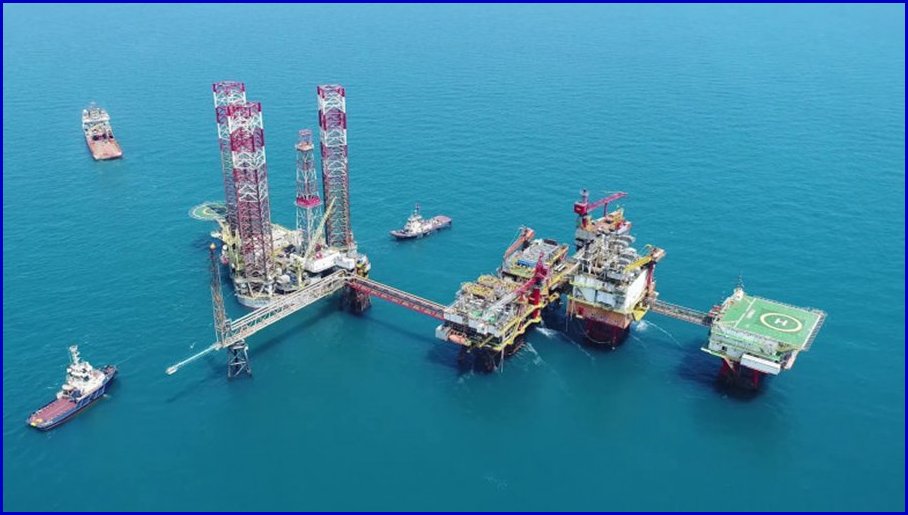
Photo: OMV Petrom
This final investment decision is an important step in the realization of OMV Petrom’s 2030 strategy. The project is expected to contribute to a 50% increase in the company’s operating profit by 2030, according to a company press release.
Romania will become the largest producer of natural gas in the EU and a net exporter of natural gas, strengthening security of supply, OMV Petrom claims.
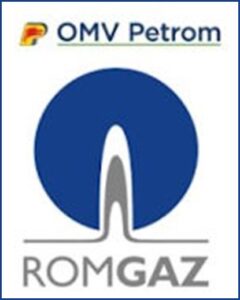 “OMV Petrom, the largest integrated energy company in Southeastern Europe, together with its partner Romgaz, has made the final investment decision for the development of the Neptun Deep project in the Black Sea. OMV Petrom is the operator of the project, with a 50% stake. The two companies approved the development plan for the Domino and Pelican Sud commercial natural gas fields in the Neptun Deep offshore perimeter, which has been submitted to the National Agency for Mineral Resources (ANRM) for confirmation.
“OMV Petrom, the largest integrated energy company in Southeastern Europe, together with its partner Romgaz, has made the final investment decision for the development of the Neptun Deep project in the Black Sea. OMV Petrom is the operator of the project, with a 50% stake. The two companies approved the development plan for the Domino and Pelican Sud commercial natural gas fields in the Neptun Deep offshore perimeter, which has been submitted to the National Agency for Mineral Resources (ANRM) for confirmation.
Christina Verchere, CEO of OMV Petrom said, “With the final investment decision for the Neptun Deep project, together with our partner Romgaz, we are entering the development phase of the first offshore deepwater project in Romania. This is an important step forward in the implementation of the company’s 2030 Strategy and will significantly change our portfolio. Our proposal to shareholders remains to increase investments, increase profitability and dividends – all while ensuring a long-term sustainable business during our energy transition.”
The infrastructure needed to develop the Domino and Pelican Sud commercial offshore natural gas fields includes 10 wells, three subsea production systems and associated gathering pipelines, an offshore platform, the main natural gas pipeline to Tuzla and a natural gas metering station. The platform generates its own electricity and operates to the highest standards of safety and environmental protection. The entire infrastructure is operated remotely through a digital replica (digital twin). This makes it possible to optimize processes and will help improve our environmental performance by making electricity consumption more efficient and reducing emissions.
Estimated key aspects related to the Neptun Deep project (100%):
– Total investment for development is estimated at 4 billion euros, largely to be spent in the period 2024-2026;
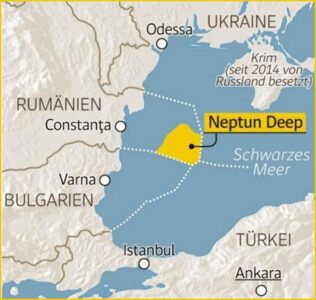
– Plateau production is estimated at about 140 thousand barrels of oil equivalent per day for nearly 10 years;
– Estimated extractable volumes are currently about 100 billion cubic meters (about 700 million barrels );
– Unit production costs are estimated to average $3/boe (for the life of the field);
– HSSE: carbon footprint is estimated to be better than the industry benchmark (at plateau production, carbon footprint of about 2.2 kg CO2/voe, significantly below the industry average of 16.7 kg CO2/voe according to IOGP). State-of-the-art technology and expertise should be used to produce natural gas in a safe and environmentally friendly way,” the source quoted.
The perimeter of Neptun Deep in the Black Sea covers an area of 7,500 square km and is located about 160 km from the coast, in waters with depths between 100 and 1,000 meters. Since 2008, exploration activities in the Neptun Deep perimeter have included two 3D seismic acquisition campaigns and two exploration drilling programs. The first natural gas discovery was made in 2012. Total exploration and evaluation expenditures to date exceed 1.5 billion euros.
Romania will have a surplus of natural gas and practically double its production, well above its current domestic consumption needs. And another very important aspect: the country is becoming a provider of regional energy security.
How Azerbaijan can replace Russia in EU energy market after Chisinau summit
Chisinau hosted the European Political Community Summit on June 1. Invited here were 47 European Union heads of state and leaders who will discuss global issues related to the war in Ukraine, Europe’s energy security and the diversification of energy sources. The summit in Chisinau secures the special status of the EU outpost in the Caucasus for Azerbaijan, making it the European Union’s biggest partner to replace Russia in the European energy market, Newsweek writes .
Reuters news agency notes that the signing of a peace agreement between Azerbaijan and Armenia is expected in Chisinau.
Edit: Now that the Russian Federation has withdrawn its troops from Armenia because of the war in Ukraine, the Armenians are choosing eggs for their money and therefore opting for the peace agreement, despite the fact that Azerbaijan may still have an alternative route via Georgia) Armenia seems willing to recognize the Nagorno-Karabakh enclave as part of Azerbaijan, on condition that the safety of ethnic Armenians in the area is guaranteed. Armenian Prime Minister Nikol Pashinyan said so recently at a press conference, the Russian news agency Tass reported.
Despite attempts by Moscow and Tehran to disrupt the negotiation process, the Wall Street Journal notes, Baku, with the active participation of Brussels and Washington, is trying to normalize relations with its neighbor and open regional transportation routes. First, it refers to the Zangezur Corridor project.
The opening gives the European Union a direct transport route to China, bypassing Russia – via Turkey, Azerbaijan, the Caspian Sea and Central Asia.
Recently, especially after the Russian invasion of Ukraine, Azerbaijan has become one of the main countries with which the replacement of Russian energy resources in the European market is carried out.
Baku supplies oil and gas to Romania, Croatia, Bulgaria, the Czech Republic, Austria, Germany, Greece, Spain, Ireland, Portugal and Italy. Negotiations are underway with Moldova, Hungary and Albania.
In 2022, the volume of Azerbaijan’s gas deliveries to the European Union reached 12 billion cubic meters, and by 2027 Baku plans to double that figure.
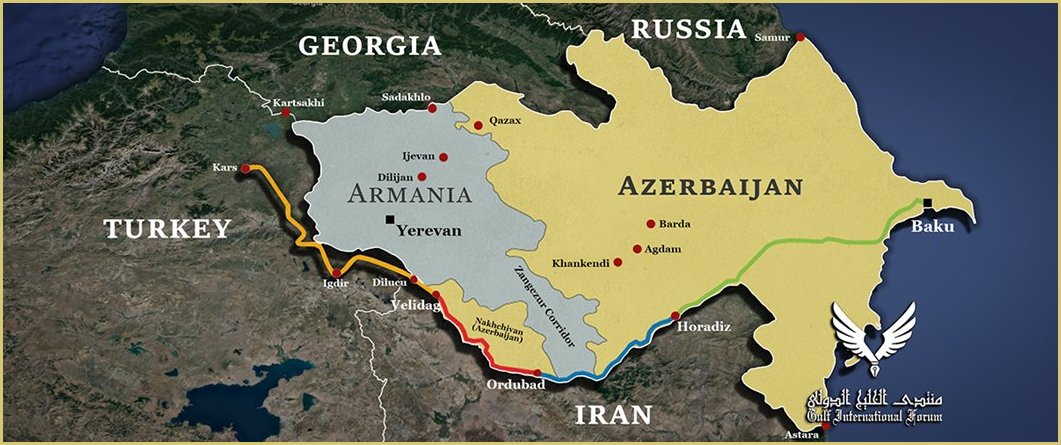
Azerbaijan’s special role as a reliable supplier of energy resources not controlled by Russia has been noted by many other European leaders and international organizations. German Chancellor Olaf Scholz said “Azerbaijan is a partner of great importance to Germany and the EU,” while the European Commission said Azerbaijan is “an important partner for the EU in efforts to phase out fossil fuels from the Russian Federation.”
Thanks to the Baku-Tbilisi-Ceyhan gas pipeline, the construction of which was supported by the US and Britain, Azerbaijan has had an oil transport route independent of the Kremlin since 2006. The presence of such infrastructure is crucial for Baku’s independent energy policy and in the interest of the European Union.
Shipbuilding Sector
Damen Shipyards Mangalia employs more than 200 people
Damen Shipyards Mangalia, the largest shipyard in Southeastern Europe, employs 227 people. Among the positions available are those of locksmiths, welders, pipefitters, mechanics, production foremen.
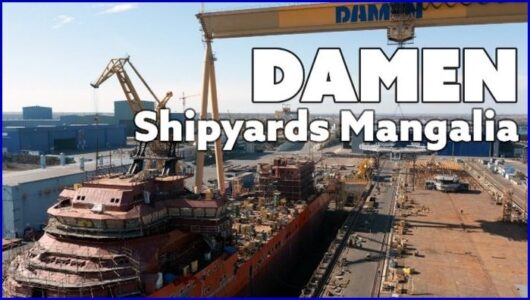
“We decided to expand and develop the teams, especially the direct productive teams, which add value on the construction site, to improve the processes in accordance with the requirements of the profile market, to make communication more efficient and to accelerate the programs to increase efficiency and productivity on the construction site. The current production plan calls for an addition of skilled and unskilled employees, with the possibility of on-the-job training. We want to grow our team, but more than that, we want to grow the activity at the Damen Mangalia Shipyard, to ultimately achieve significant development of the regional economy and in the medium term be a relevant player in the profile industry and long,” said Liana Constantin, Corporate Affairs Director of Damen Shipyards Mangalia.
The Damen Mangalia Shipyard is located on the Black Sea coast and operates as a joint venture between the Ministry of Economy, represented by the 2 Mai SA Mangalia Shipyard and DAMEN Holding BV The latter took over operational control and owns the shipyard, as of July 20, 2018.
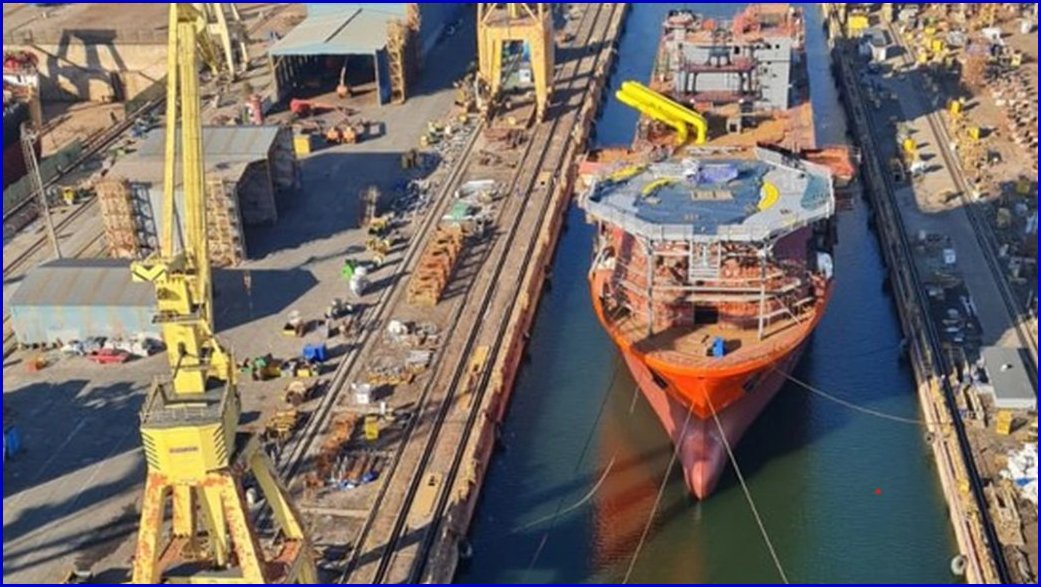
The Damen Mangalia Shipyard has three docks, with a total length of 982 meters and a dock area that extends over 1.6 kilometers and can guarantee a total sheet metal cutting capacity of 15,000 tons/month. The docks, with widths of 48 and 60 meters, make it possible to approach the construction and rebuilding of ships and large maritime structures, such as ships and offshore structures.
Big contract for Galati shipyard: Damen designs and builds partly in Romania the 4 new anti-submarine warfare frigates for the Netherlands and Belgium
The Damen Galati shipyard will design and partially build four new anti-submarine warfare frigates in Romania for the navies of the Netherlands and Belgium, according to a contract signed with the Dutch Defense Ministry and Thales. The value of the entire program for the four ships is nearly 4 billion euros.
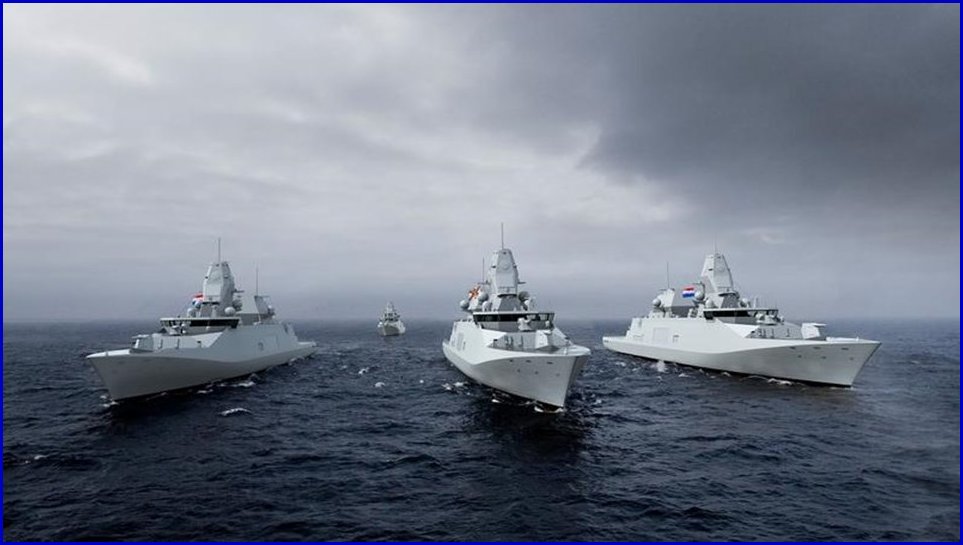
Photo: Damen
Anti-Submarine Frigates for the Netherlands and Belgium, also built in Galati
The Dutch Ministry of Defense, Damen and Thales signed the contract for the design, construction and delivery of four anti-submarine warfare (ASW) frigates; two for the Netherlands and two for Belgium, the company Damen announced in a statement.
The ASW frigates are the replacements for the current Karel Doorman-class multipurpose frigates. They can be used for multiple tasks, but the emphasis will be on anti-submarine warfare. The ships will have hybrid diesel-electric propulsion and are designed to operate as quietly as possible to minimize detection by submarines. On board, according to the company, will be a comprehensive array of sensors to detect submarines.
State Secretary Christophe van der Maat: “The procurement of ASW frigates will take place in the way I prefer: through intensive cooperation between countries, armed forces and industry. Over time, the result will be an innovative and powerful weapon system. This will benefit us, as direct users, but also in Europe and NATO.”
Construction and design of ships “and at our shipyard in Romania, where the hulls of the ships will be partially built”
“This is a wonderful project and a special new chapter for our Damen marine division,” said Arnout Damen, CEO of Damen Shipyards Group. “We are proud to build these magnificent frigates and look forward to working with many partners and suppliers, mostly Dutch, on this project. With these customer launch projects, we keep vital know-how in house and thus our place among the world’s leading complex shipbuilders. More importantly, the crews of the Dutch and Belgian navies will receive state-of-the-art frigates to perform their vital duties.”
“We are delighted that Thales has again been selected to supply sensors and fire control systems for a new class of ships for the Royal Netherlands Navy,” said Gerben Edelijn, CEO of Thales Netherlands. “ASW frigate crews will be able to rely on our state-of-the-art Above Water Warfare system, which provides effective defense against current and future threats.

The new frigates will be 145 meters long, with a maximum width of 18 meters and a draft of 5.5 meters at a displacement of 6,400 tons.
On board there will be room for a crew of 117 and capacity for additional personnel to sail along. The ASW frigates will be equipped with an Under Water Warfare Suite (UWWS), an Above Water Warfare System (AWWS) and underwater decoys, among others.
The ships will be armed with a 76 mm cannon, MK54 torpedoes, Rolling Airframe Missile (RAM) and Naval Strike Missile (NSM) missiles. The frigate also accommodates other weapons, such as more powerful missiles and more powerful laser weapons. There are also boats and unmanned aircraft on board for use on/under water and in the air.
The current Karel Doorman-class multipurpose frigates were built by Damen Naval (then Koninklijke Maatschappij de Schelde) starting in 1985. Eight M frigates were delivered between 1991 and 1995, of which six were eventually sold to other countries, including two to Belgium. With the end of their service life, the Netherlands and Belgium jointly decided to replace their ships with these ASW frigates.
The first ship is expected to be delivered to the Netherlands in 2029. Belgium’s first ship will follow in 2030 and the remaining ships will be delivered to each country in 2031.
According to information circulated in the international press, the cost of the program for the four frigates is nearly 4 billion euros.
ASW frigate crews will be able to rely on our state-of-the-art Above Water Warfare system, which provides effective defense against current and future threats. Together with the German F126 ships, the Belgian and Dutch ASW frigates will use identical advanced technology to defend and protect valuable objects,” the Dutch official added.
The entire project is a joint operation with the Dutch Ministry of Defense, with some of the work to be carried out by the ministry itself. Arnout Damen added: “We have almost 150 years of knowledge, skills and technology to coordinate and execute the design and construction of complex ocean-going vessels. This is done not only in the Netherlands, but also at our yard in Romania, where the hulls of the ships are partly built.” These hulls then arrive in Flushing for further completion, installation and integration of weapon systems and eventual commissioning of the frigates for delivery to the Belgian and Dutch navies.
Agri & Food Sector
Romania is drying up. One-third of the country’s agricultural land is at risk of desiccation, possibly desertification
According to an Environment Ministry study, more than one-third of the country’s arable land is at risk of desiccation, possibly even desertification. There are more than 800,000 acres on which farming will become increasingly difficult. The hardest hit areas are in Olt, Dolj and Mehedinți provinces.
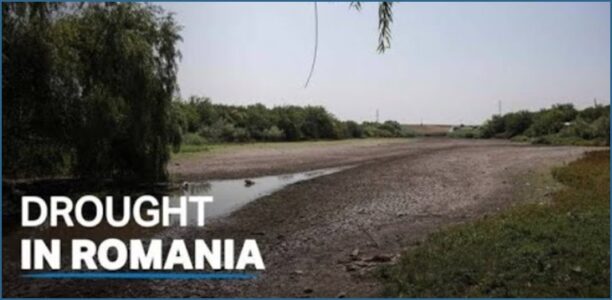 According to a study conducted by the Institute of Research for Pedology and Agrochemistry Bucharest.
According to a study conducted by the Institute of Research for Pedology and Agrochemistry Bucharest.
By area, there is high and moderate susceptibility to degradation for 13.3% of the Western Plains, or 1.5 million acres. Also, 6.1% of the land on the Transylvanian plateau is in moderate danger, while 6.4 million hectares in the Romanian plain, the Moldovan plateau and partially in Dobrogea are in high danger.
As for Dobrogea, Institute specialists refer to this area as a “semi-arid.” Although it covers a small area (7.1% of total susceptible areas), it shows extremely high susceptibility in an area of more than 251,800 ha, very high susceptibility in an area of 529,700 ha, and moderate susceptibility in 18,500 ha, respectively.
As for land species at high risk of desiccation or desertification, there is a risk of desiccation on about 8 million hectares of arable land, or 33.7% of the country’s total area. Also at risk are 150,700 acres of pastures and meadows and 21,400 acres of permanent crops.
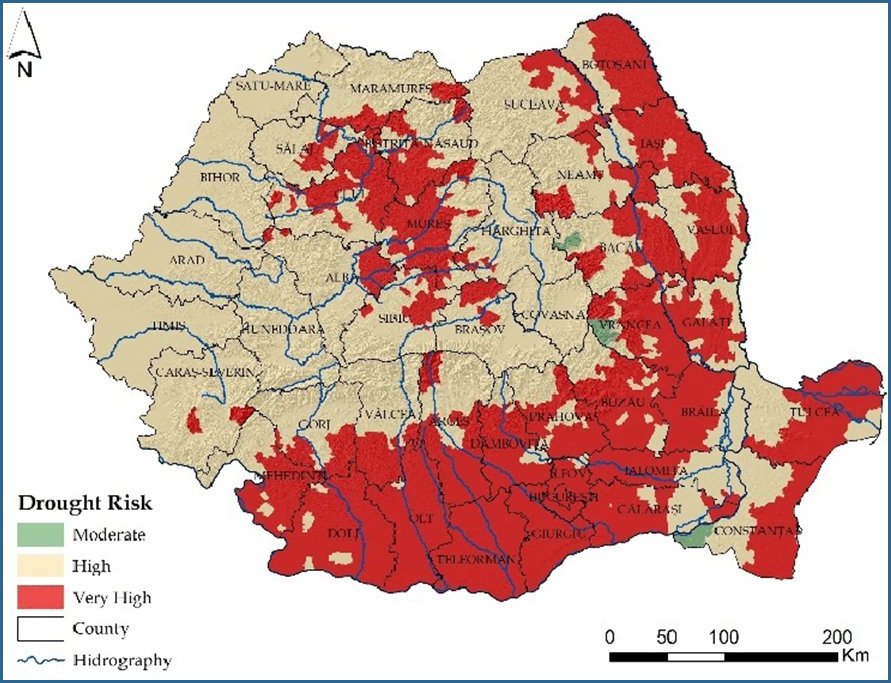
By province, the most affected are Olt, where 65% of arable land is at risk, Dolj, where 66% of arable land is at risk, and Mehedinți, with 30% of arable land at risk.
According to the analysis, desertification and land degradation are current and growing threats throughout the EU. While land degradation affects all EU countries, the risk of desertification is increasing, especially in southern Europe and the Black Sea-bordering areas of Bulgaria and Romania.
DN Agrar signed contract with BRK Financial Group for market making services
 DN Agrar Group (share symbol DN), the largest integrated livestock producer in Romania, with cow milk production and vegetable production, announced to investors that it has signed a contract with BRK Financial Grup to provide market making services, starting from the date of May 30, 2023.
DN Agrar Group (share symbol DN), the largest integrated livestock producer in Romania, with cow milk production and vegetable production, announced to investors that it has signed a contract with BRK Financial Grup to provide market making services, starting from the date of May 30, 2023.
“For market-making services, the minimum volume corresponding to BRK Financial Group’s fixed bid-ask prices represents the equivalent of EUR 9,000, with a maximum spread between the buying and selling prices displayed by the intermediary of 2-4%. The gross average monthly percentage of maintaining the fixed bid and offer on the market is 90%,” said the report published on the Bucharest Stock Exchange.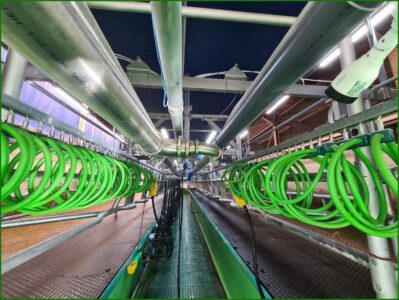
The contract is concluded in accordance with the provisions of the Bucharest Stock Exchange and aims to increase the liquidity of the DN Agrar Group’s shares.
DN Agrar has a capitalization of 116.1 million lei and is 74.1% controlled by the Dutch from AM Advies BV, with the rest of the shares freely available for trading. Since the beginning of the year, DN shares have risen 0.3%, based on 3.5 million lei transactions, BVB data show.
The group closed 2022 with a profit of nearly 14 million lei, up 57% compared to 2021, with sales of nearly 151 million lei, up 221%.
Results for the first quarter of 2023 are expected to be published on the BVB on August 7, 2023.
Outbreak of African swine fever on a large farm at the Smithfield farm in Timiș County. More than 53,000 pigs will be slaughtered
Director of the Timiş Veterinary and Food Safety Directorate (DSVSA), Flavius Nicoară, announced Saturday that an outbreak of African swine fever (ASV) has been confirmed in a commercial pig farm. Smithfield (owned by China’s WH Group). The company has had several outbreaks.
According to the quoted source, there are 53,764 pigs at the Smithfield company’s Voiteni Farm, all of which will be slaughtered.

“After carrying out the laboratory tests at the Animal Health and Diagnostic Institute in Bucharest, the results of which were positive, PPA was confirmed and a meeting was called with all the members of the Local Center for Disease Control, after which it was voted to issue the decision approval of the protection and surveillance zones around the outbreak of ASF, the measures of immediate killing under official supervision and neutralization by alternative methods of burning/burial of risk material and approval of the plan of measures in case of confirmation of ASF disease in domestic pigs of the SC Smithfield commercial farm in Romania, Voiteni Farm,” Flavius Nicoară said.

African swine fever does not affect humans, there is no risk of disease for them, Flavius Nicoară said.
New and outgoing agricultural council in Bucharest
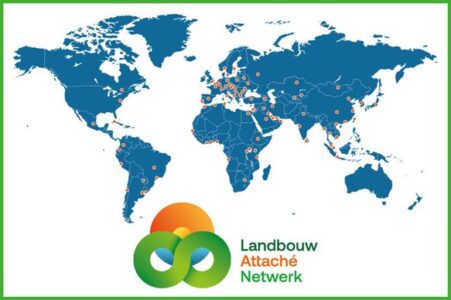 Mr. Arie Veldhuizen in Astana, working in Kazakhstan, Uzbekistan and Kyrgyzstan. Mr. Veldhuizen is currently working for the Ministry of LNV as a Council at the Dutch Embassy in Bucharest.
Mr. Arie Veldhuizen in Astana, working in Kazakhstan, Uzbekistan and Kyrgyzstan. Mr. Veldhuizen is currently working for the Ministry of LNV as a Council at the Dutch Embassy in Bucharest.
Ms. Sophie Neve in Bucharest, working in Romania, Bulgaria and Moldova. Ms. Neve currently works as a Senior Advisor at the Directorate of Network Facility at the Ministry of LNV. She succeeds Mr. Veldhuizen in Bucharest.
On the farm tractor to Romania
Romania is a land of opportunity, observes Pieter Helfferich of Agriprogress. He advises farmers on innovation and sustainability, and does the same in Romania. The land there was so cheap that it was also a good investment.
But it took some adjusting to Romanian culture. They are real meat eaters, so as a vegetarian it can get quite uncomfortable.
Bert Colijn, ING senior economist, sees Romania as increasingly important to the European economy. Because the “reshoring” of companies that move their production from China back to Europe does not end up in the Netherlands, but in countries like Romania.
Listen to the podcast:
https://www.bnr.nl/podcast/wereldveroveraars/10517344/met-de-boerentrekker-naar-roemenie
The farm cart is a very outdated BNR imagery, though, and looks a lot like the corny Dutch “Frau Antje” that was active in Germany
Financial sector
Mazars has published for the 11th time its regional tax guide, which presents snapshots and comparative charts of the tax systems of 25 CEE countries for 2023
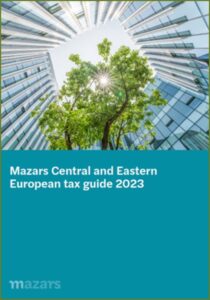 Growing from 15 states in 2013 to 25 in 2023, this guide dives into a broad spectrum of tax issues, focusing on corporate tax, transfer pricing, employment and sales tax. The 2023 Guide offers a detailed analysis of tax regimes in a range of countries, including Central and Southeastern Europe, Germany, Austria, Moldova, Ukraine, the Baltic states, and for the first time, Central Asian countries such as Kazakhstan, Kyrgyzstan, and Uzbekistan. We invite you to visit the interactive online platform of the Mazars CEE Tax Guide 2023. Key findings:
Growing from 15 states in 2013 to 25 in 2023, this guide dives into a broad spectrum of tax issues, focusing on corporate tax, transfer pricing, employment and sales tax. The 2023 Guide offers a detailed analysis of tax regimes in a range of countries, including Central and Southeastern Europe, Germany, Austria, Moldova, Ukraine, the Baltic states, and for the first time, Central Asian countries such as Kazakhstan, Kyrgyzstan, and Uzbekistan. We invite you to visit the interactive online platform of the Mazars CEE Tax Guide 2023. Key findings:
– The global minimum tax should be incorporated into Romanian law by the end of the year.
– CEE countries have varied corporate tax rates, with average tax rates between 15 and 20 percent.
– By adopting digital technology, countries with high standard VAT rates can ensure compliance and streamline their tax processes.
Click
here
to download the full report.
For further information: Edwin Warmerdam Partner, Head of Taxation Edwin.Warmerdam@mazars.ro
ING Bank Romania: Demand for credit eased amid inflation and high interest rates
The first months of the year confirmed macroeconomic forecasts of an economic slowdown, a fact also felt at the level of the banking sector. And against the backdrop of inflation and high interest rates, demand for credit has decreased, says Mihaela Bîtu(pictured), CEO of ING Bank Romania.
It m ould be noted that the percentage of non-performing loans is still at a very low level, about 3%, she adds, showing that customers are well able to adapt to the new economic conditions.
ould be noted that the percentage of non-performing loans is still at a very low level, about 3%, she adds, showing that customers are well able to adapt to the new economic conditions.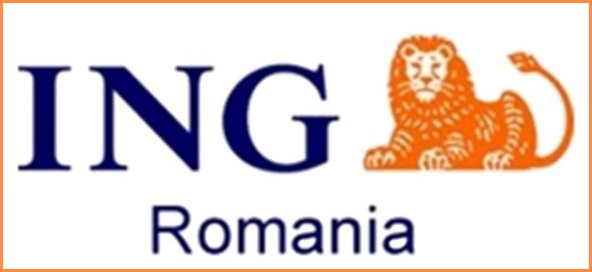
“There are many lessons learned from the past that allow us to adapt more quickly. As we said last year, we do not expect to enter a recession unless there are drastic and unexpected changes of a geopolitical or macroeconomic nature. We are exercising caution and are constantly alert to both local and international developments,” said the head of ING Bank Romania for ZF.
Even in the context of the high inflation of the past two years, there is still no significant deterioration in the performance of credit portfolios, and the fact that we are already on a disinflationary trend should support a stable evolution, appreciates Mihaela Bîtu.
ING Bank, the local branch of the Dutch group of the same name, posted a net profit of 1.06 billion lei in 2022, 3% higher than in 2021, as the bank’s revenues rose 10% to 2.6 billion lei.
Education Sector
Last year, Romania ranked last in the EU in the proportion of 25-34 year olds with a university education
At only 25%, far from the European average of 42% and the EU’s stated goal of 45% by 2030.

The average reported at the European Union level last year was one percentage point above that of 2021 (41%) and three points below the proposed 2030 target for the 25-34 age group.
Apart from Romania, the lowest rates were recorded in Italy (29%) and Hungary (32%).
In contrast, almost half of the EU member states have already reached the proposed 2030 target: Ireland (62%), Luxembourg (61%), Cyprus (59%), Lithuania (58%), the Netherlands (56%), Sweden (52%), Spain and Belgium (51%), France (50%), Denmark (49%), Slovenia (47%), Latvia (46%) and Greece (45%).
According to Eurostat, the gender gap persists, with the proportion of women with higher education significantly higher than that of men (48% vs. 37%).
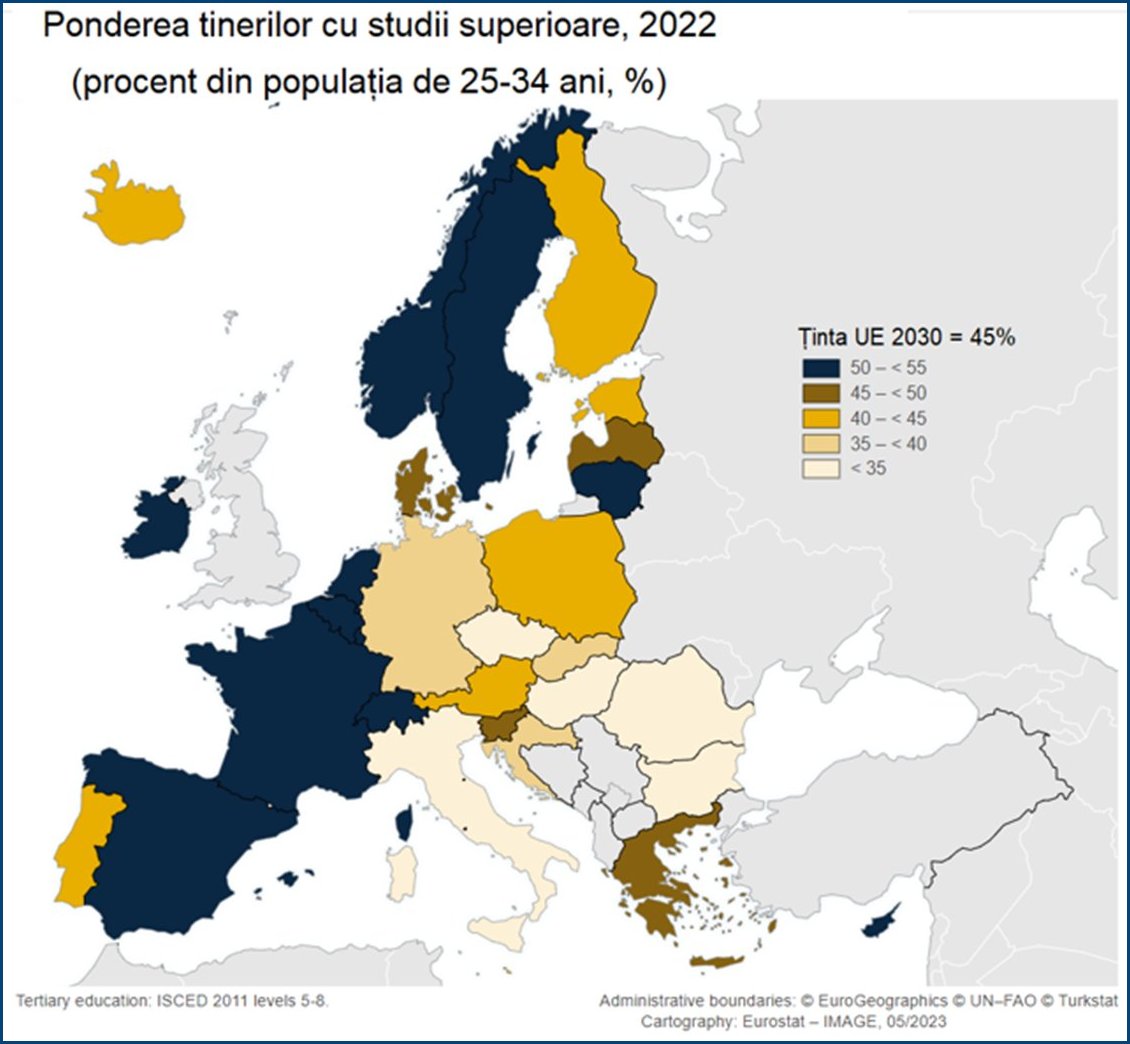
Figures on brain drain are not made clear, nor of Romanian students graduating from foreign universities, including the Netherlands.
(Geo)political developments
In Romania, the “rotation” took place almost silently.
Thereby proving their political stability over an extended period of time. Briefly, the rotation meant that in the first period the Liberals would provide the prime minister and in the second half that would then be handed over to the Social Democrats. Below is an overview of the Romanian state system.
Romania is a semi-presidential republic with a president (currently President Klaus Johannis) as head of state. At the head of the government is a prime minister (currently: Marcel Ciolacu -PSD, appointed by the president.
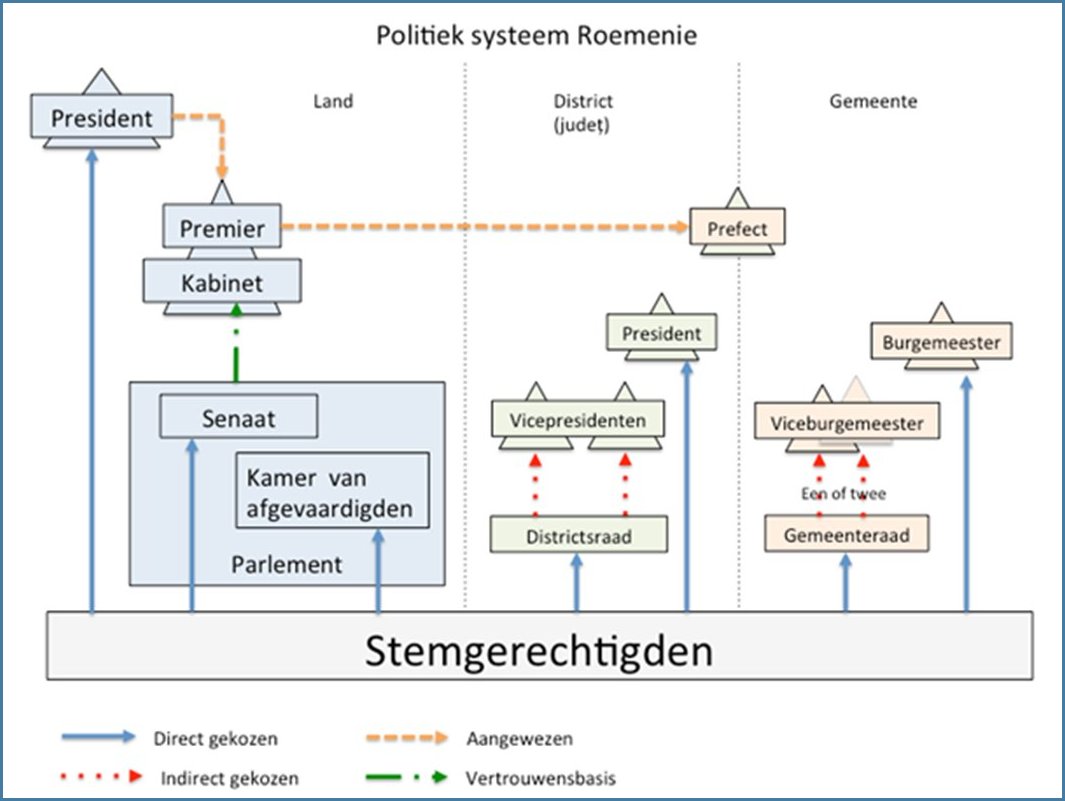
The newly formed coalition (sworn in June 15, 2023) government has 18 ministers excluding the prime minister. The coalition consisting of the socialist PSD and the liberal PNL have divided their portfolios equally, and each party will have a deputy prime minister – Marian Neacșu (PSD) and Cătălin Predoiu (PNL, moved from Justice to Interior), while the UDMR/RMDSZ (Hungarian minority) will no longer participate in the governing coalition. The new government that PSD leader Marcel Ciolacu will lead for the next year and a half will have 18 ministries, versus 20 that were in the Ciucă cabinet – Sports and Tourism have disappeared or will be added to another existing ministry.
Former Prime Minister Nicolae Ciucă has been appointed president of the Senate.
 The three main opposition parties (in no particular order) UDMR(Hungarian minority), USRPLUS(liberals) and AUR(nationalist,ultra right)
The three main opposition parties (in no particular order) UDMR(Hungarian minority), USRPLUS(liberals) and AUR(nationalist,ultra right)
In accordance with the Romanian Constitution, 18 seats in the Senate are reserved for ethnic minorities in Romania.
For comprehensive information see the English- and Romanian-language website www.gov.ro . Romania, like the Netherlands, has a bicameral system. The House of Representatives in Romania is called the Chamber of Deputies (Camera Deputaţilor) and has 332 seats. The Senate becomes Senate (Senat) and has 137 seats.
Members of the House of Representatives are elected through a district system for four-year terms. The two chambers together form the Legislative Assembly, whose task is to adopt the new Romanian (constitutional) law(s).
Romania supports core EU member states in waiving veto rights for foreign policy and security decisions
 Romania joined the group of nine countries, including the six founding members of the European Union, demanding the repeal of member states’ veto rights in two key areas: foreign policy and security, according to a Foreign Ministry statement quoted by G4media. No public debate preceded the decision.
Romania joined the group of nine countries, including the six founding members of the European Union, demanding the repeal of member states’ veto rights in two key areas: foreign policy and security, according to a Foreign Ministry statement quoted by G4media. No public debate preceded the decision.
The EU founders’ initiative came after Hungary blocked several crucial European Union decisions regarding Russia and Ukraine in recent years. The nine states launched the plea for a radical change in the EU on May 4.
In December 2022, Romanian Foreign Minister Bogdan Aurescu said in an interview with Digi24.ro that “initially we had a position to support unanimity, because we always believed that small states should have this influence at hand if there is a situation where their interests require to be able to block a certain decision.”
At the same time, Aurescu pointed out that Romania (unlike Austria) has never used the law, but found other [diplomatieke] solutions.
Hungary and Poland seek allies in defense of EU veto power
Hungary and Poland are exerting pressure to maintain the unanimity rule in European Union (EU) foreign and security policy, following the recent formation of a coalition defending the principle of qualified majority and the abolition of the right of veto in this area.This decision was announced by Hungarian Foreign Minister Péter Szijjártó.
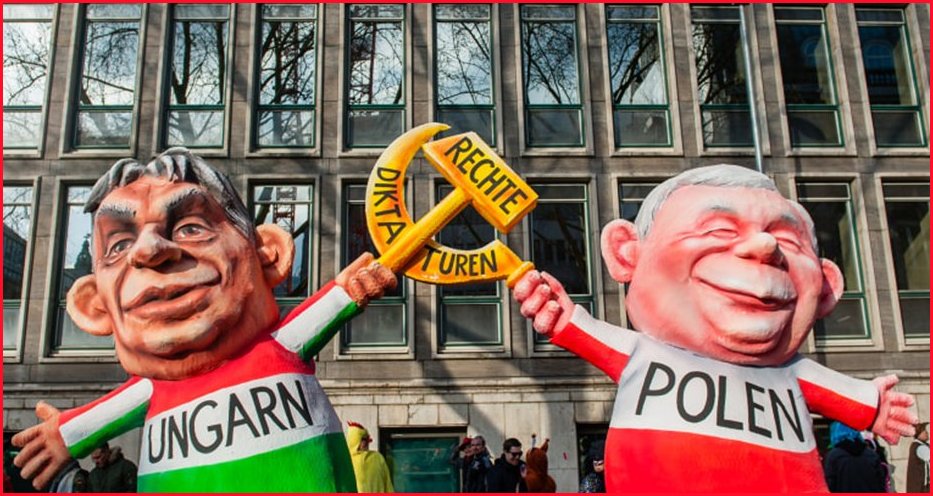
This rule applies only to certain areas of European policy – enlargement, taxes and the EU budget, The need to reach the 27 votes is often exploited by a capital to reject, derail or block collective decisions. Hungary in particular has been widely criticized for repeatedly using this individual power to thwart important agreements, thus frustrating other EU member states. This tactic was used again Monday when Budapest blocked payment of a €500 million tranche of EU military aid to Ukraine after Kiev decided to place Hungary’s largest commercial bank – OTP – on the list of “international war supporters.” Hungarian Bank, as well as other private companies on the list, reject these allegations. It considers this an incorrect and biased decision.
How can NATO circumvent the Montreux Convention to protect Romania and the other Black Sea states?
The North Atlantic Alliance should draw up a plan for the defense of member states in the Black Sea region, and a multinational base in Romania would be ideal.
Before the end of the war in Ukraine, NATO must prepare a Black Sea peacekeeping plan. As long as the countries bordering the Black Sea – Romania, Bulgaria, Ukraine and Georgia – do not have their own strong naval forces capable of withstanding Russia’s aggressive Black Sea fleet, NATO forces must help them.
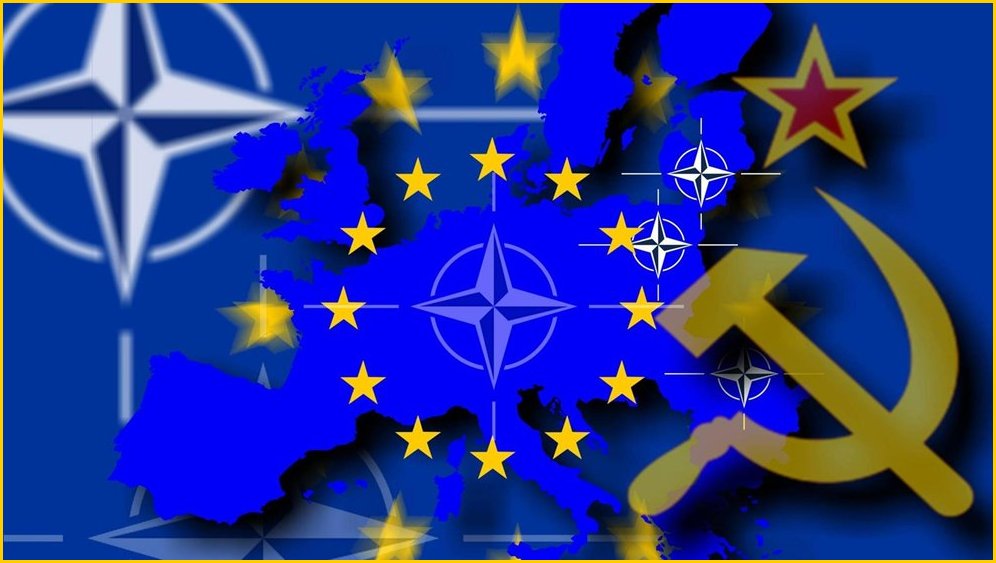
“The Black Sea countries are not sitting still. They are building stronger fleets as fast as they can. Ukraine, of course, wants to build a modern war fleet, and Turkey is already building a few warships. Romania wants to buy French Scorpene submarines, while Bulgaria is buying two German-made modular multipurpose patrol vessels. But progress is quite slow and those who promote these projects could become targets of Russian subversion, ” writes Craig Hooper, director and founder of Themistocles Advisory Group, in an article for “Forbes.”
Russia remains strong at sea
Regardless of the outcome of the war in Ukraine, it will take years for the Black Sea states to defend their interests at sea. And even if Russia is defeated on land, the Russian navy will remain a powerful force. This will serve as Moscow’s main tool for maritime incursions, instilling fear and violating freedom of navigation in the Black Sea basin. Old habits are hard to break. Russia’s long-held dream of dominating the entire Black Sea will remain a nationalist slogan for many years to come.
Hooper notes that Turkey would be a natural guarantee of peace in the area. But as guardian of the Black Sea, which controls the Bosphorus and the Dardanelles, Ankara seems more interested in maintaining ties with Russia and NATO than in tough calls for deterrence and maritime compliance.
A multinational base in Romania would be ideal
“If Russian naval forces are not completely withdrawn from the Black Sea, maintaining the postwar peace in the Black Sea will fall on the shoulders of NATO and the most powerful allied states will not border the Black Sea. A multinational base somewhere in Romania would be ideal for this. Modeled after the Spanish one on Rota, where four American Arleigh Burke-class destroyers reside, the Romanian base would be ideal. But a strange diplomatic relic from the 1930s – the Montreux Convention – stands in the way of this solution ‘, writes the author.
The treaty makes deployment of the NATO peacekeeping fleet in the Black Sea a difficult task. Peacekeeping efforts in this area may require new weapons and ships, and this is only possible after prior consultation.
The obstacle is called the Montreux Convention
The 1936 Montreux Convention is an old treaty. The agreement, last amended before World War II, regulates the movement of warships through the Dardanelles and the Bosporus. It limits the tonnage, time and types of warships other than Black Sea littoral states that can pass through Turkish waters and operate in the Black Sea.
This diplomatic relic complicates multinational peacekeeping efforts at sea.
Currently, the treaty allows navies outside the Black Sea to operate warships of up to 30,000 tons (and in some cases up to 45,000 tons) in the Black Sea. The Montreux Treaty requires warships not from the Black Sea to leave the Black Sea basin after 21 days.
Gaps in the Montreux Convention
Without amending the Montreux Treaty, it will be difficult to manage a multinational fleet of conventional warships in the Black Sea.
“To restore civilian, rules-based operational norms in the Black Sea, NATO could consider a delicate departure from the old convention, preserving the letter of the law, if not the spirit, of the Montreux regulatory regime,” Hooper suggested .
He said the Alliance might consider converting Point-class merchant ships, oilfield disaster response ships or other civilian vessels under the flag of a NATO member state for missions in the Black Sea. Ships – such as the Point Class – that can operate in the region and have “family members” previously adapted for military activities may be particularly useful.
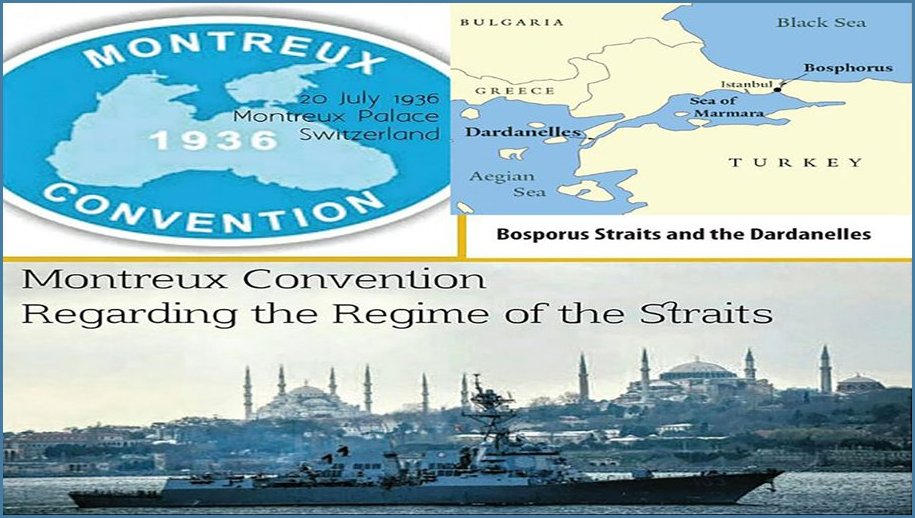
Once these civilian ships are in the Black Sea, they can be quickly modified, for example at Damen Shipyards’ Romanian shipyards, to be equipped with modular weapon systems or helicopter platforms. After these improvised warships are equipped with the necessary equipment, they can begin to function as peace vessels “, the author explains. According to him, these improvised warships could operate without having to regularly leave the Black Sea basin. If Turkey protests, the ships could easily be transferred from NATO control to the nominal control of Romania or another Black Sea state.
Special Messages
Earthquake in the Black Sea near Crimea. What size did it have?
Earthquake in the Black Sea near Crimea. What a size it had. PHOTO: INFP
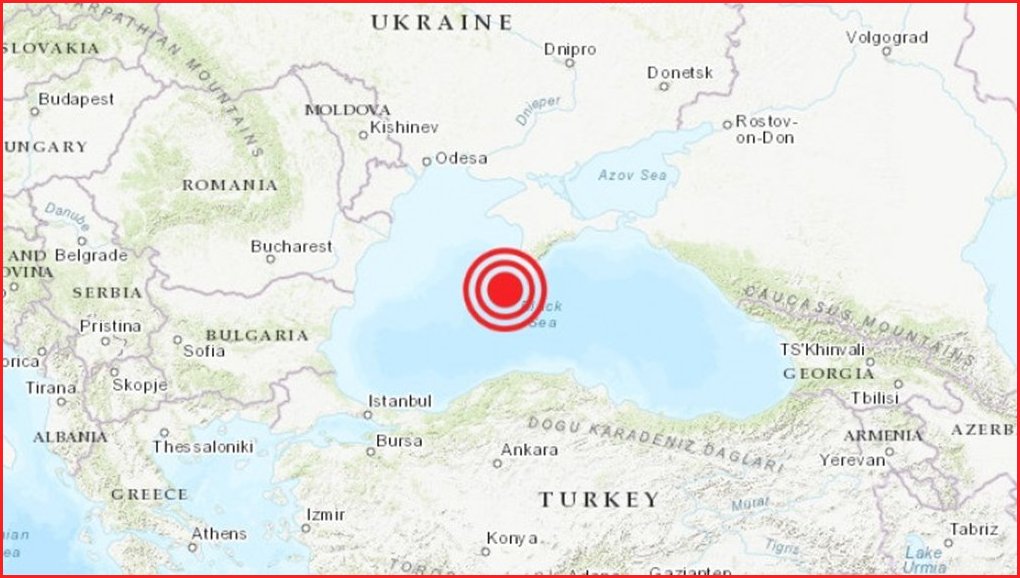
PHOTO: INFP
A major earthquake occurred Thursday morning, June 22, in the Black Sea, reports the National Institute for Earth Physics (INFP) The earthquake occurred at 05:42:29 (Romania’s local time), in the Black Sea, according to INFPV
The earthquake, measuring 5 on the Richter scale, occurred at a depth of 10 kilometers.
The earthquake occurred 93 kilometers southwest of Sevastopol, on the Crimean peninsula.
Is the seismic map of Romania changing? Two zones came out of “sleep”
Two seismic zones known to specialists have come out of “dormancy” this year in Romania: Gorj and Banat, but we do not know if there will be more aftershocks or more frequent earthquakes in those regions. Why is the Gorj area more special? When were there strong earthquakes in Banat and Crișana? Why does the magnitude of 4.9 attract attention in Arad, but not in Vrancea?
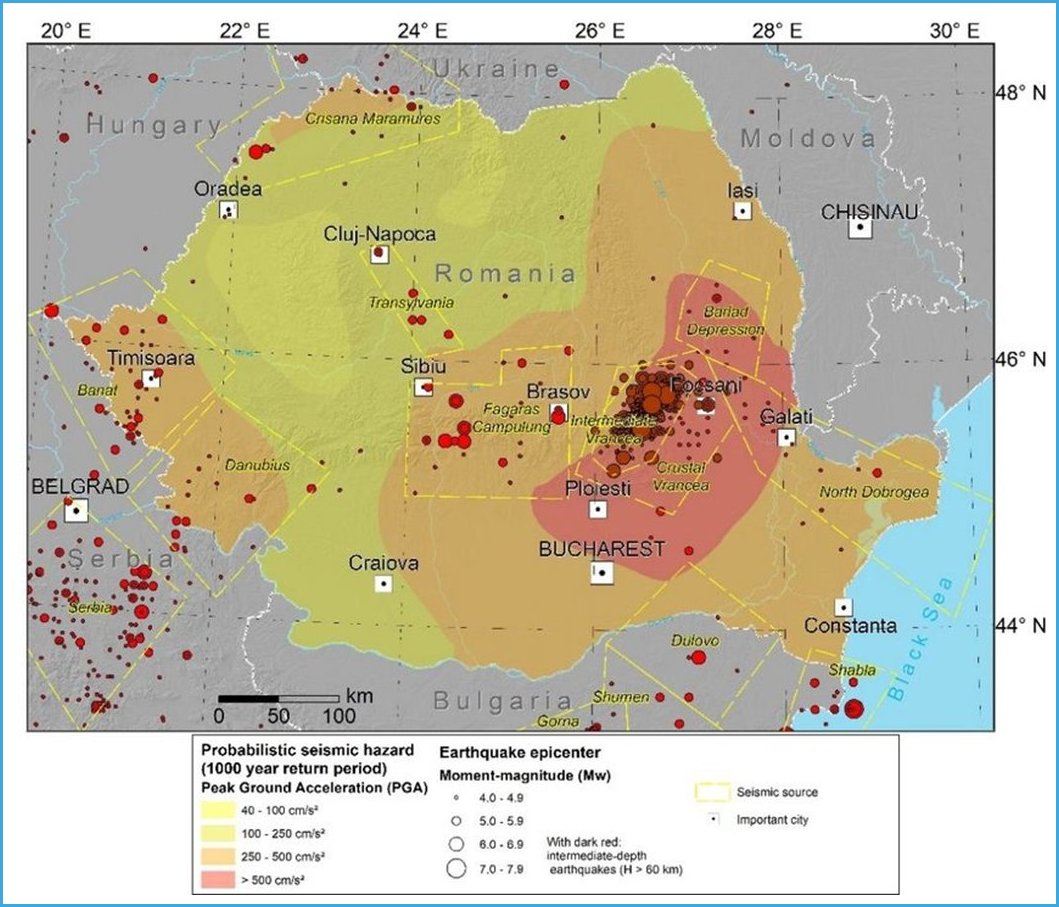
An area where a 4.9 degree Richter earthquake is worth considering
The Banat and Crișana seismic zones are well known to geologists, but are much less noticed by the general public because the country’s strongest earthquakes did not occur there.
“Compared to the Vrancea area, which is much more frequent, these earthquakes in Banat are rarer, but they are known, and in the country’s seismic risk zoning they even appear there at a higher level than the Gorj area, where that there was an unexpected earthquake. It is no surprise that earthquakes occur in Banat and Crișana, they are historical data and INFP has all the documentation,” Alexandru Szakacs, scientific researcher at the Institute of Geodynamics in Bucharest, explained to HotNews.ro.
Monday’s strongest earthquake in the Arad region measured 4.9 on the Richter scale. Should we consider it strong? “The strength of earthquakes is also related to depth; an earthquake of 5.5 on Richter, up to 6, if it is at shallow depth, it has great effects. The same earthquake, at a depth of 80 km, does not produce so great effects. A 4.9 magnitude earthquake in Vrancea goes almost unnoticed, the world is already used to it “, explains Alexandru Szakacs.
It should be noted that the magnitude of the earthquake of 4.9 degrees on the Richter scale, produced at 20:46 on May 22, at a depth of 9 km and 22 km from Arad, was revised to 4.7 degrees .
In February, several earthquakes occurred in the Gorj area, an area that has been reactivated, and the most significant was the one in Oltenia, on Feb. 14, with a magnitude of 5.7 on the Richter scale. INFP announced three months ago that there were 960 earthquakes with local magnitudes on the Richter scale between 0.2 and 5.7 in the Gorj region in 10 days between Feb. 13 and Feb. 23, 2023.
Of these, 15 earthquakes were more than 3.5th strength by which earthquakes can be felt by the population in the epicentral area.
Experts from the INFP said in February that Gorj is a known seismic zone, but with weak activity until the episodes of the second month of the year. Then the devices recorded the highest seismic intensity in the area in the past 200 years. Also about Gorj, INFP representatives said that the capacity of that area to produce earthquakes of large magnitude is limited.
The two areas, Gorj and Banat, have indeed been reactivated, but this does NOT change how we see the national earthquake map.
We can therefore say that this year two seismic zones of the country have been reactivated, seismic zones known to specialists, where, however, in recent years there have been no earthquakes worth considering. “It is reasonable to say that the area has reactivated since this earthquake occurred, but that does NOT mean that there will definitely be a phase of frequent and increasingly large earthquakes. No one can predict what will happen next,” said the researcher.

When have there been strong earthquakes in the southwestern part of the country.
There were three earthquakes 32 years ago, all above 5 degrees, so with lower intensity than that of May 22, 2023. Earthquakes of 6 degrees Richter or stronger we did not find in the available data.
Two earthquakes with magnitude greater than 5 occurred in July 1991, one on July 12 (Banloc area), measuring 5.7 on the Richter scale, in Timiș province, and the other on July 18, measuring 5.5, in Herculaneum area.
On December 2, 1991, an earthquake with a magnitude of 5.6 also occurred in Timiș County in the area of the municipality of Voiteg. In all three cases, houses were damaged.
The May 22, 2023 earthquakes in Banat and Crișana.
An earthquake with a magnitude of 4.9 and one with a magnitude of 4.3 occurred Monday night in Crişana, Arad province, and was felt in several places in the area.
Constantin Ionescu, director of the National Institute for Earth Physics, told Digi 24 that the 4.9 earthquake that occurred in Arad is “significant for the area,” but specified that the area is known from a seismic point of view. “The epicenters in the Banat region migrate according to the stresses accumulated in the surface faults.”
The INFP chief also said that it is difficult at this time to estimate how things will evolve because “the epicenters in the Banat region are migrating according to the tensions that accumulate in the surface fractures.”
“It is possible (to have aftershocks). I saw it appear about an hour after the first earthquake. Now we do NOT know exactly how the evolution will be there, in that area”.
Romania, earthquakes and high-risk areas
Vrancea is the seismogenic zone with the highest destructive potential in the country, evidence that the most destructive earthquakes occurred there. Banat, Crișana, the Făgăraș – Câmpulung area fall under the category of “superficial seismic sources of local importance for seismic hazard.”
Earthquakes are natural phenomena caused by the release of energy in the earth due to the fracturing of rocks subjected to accumulated stresses. The surface along which rocks “break” and move is called a “fault plane”.Earthquakes in Romania of tectonic origin occur along fractures in the Earth’s crust (located at a depth of less than 60 km), as in the cases of Gorj and Banat.
Establishment of the National Museum of Roma History and Culture in Romania
The Chamber of Deputies passed a bill last 23.
The legislative proposal establishes the National Museum of Roma History and Culture in Romania as a public institution of national interest under the authority of the National Agency for Roma.
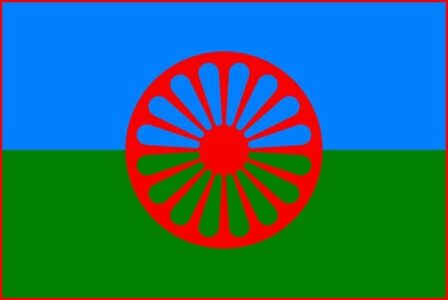
“The purpose of the museum is to present and promote the history, culture and traditions of Roma in Romania, to raise national and international awareness of the contributions of this national minority to the development and modernization of Romanian society over time, to commemorate the victims of slavery and deportation to Transnistria, as well as to combat racism and discrimination,” said the law passed by deputies.
The museum’s heritage consists of collections of art objects and documents prepared by the Association of Roma Pro-Europe Party, a member of the National Minorities Council, in cooperation with other public or private institutions and non-governmental organizations from Romania and abroad, as well as pieces obtained through transfers, donations and acquisitions.
Five Romanian cities ranked in top 100 safest in the world
Five Romanian cities, namely Cluj-Napoca, Timisoara, Brasov, Bucharest and Iasi, were in the top 100 safest cities in the world in a list compiled by Numbeo.
Numbeo’s rankings take into account a range of factors to determine the safety level of cities: the level of crime; how safe it is to walk through the city during the day and night; the likelihood of being robbed or having your car stolen; the likelihood of being physically attacked by strangers; the likelihood of being insulted or disturbed by someone on the street; the likelihood of being attacked because of skin color, ethnicity, gender or religion; and the level of drug use or sales.
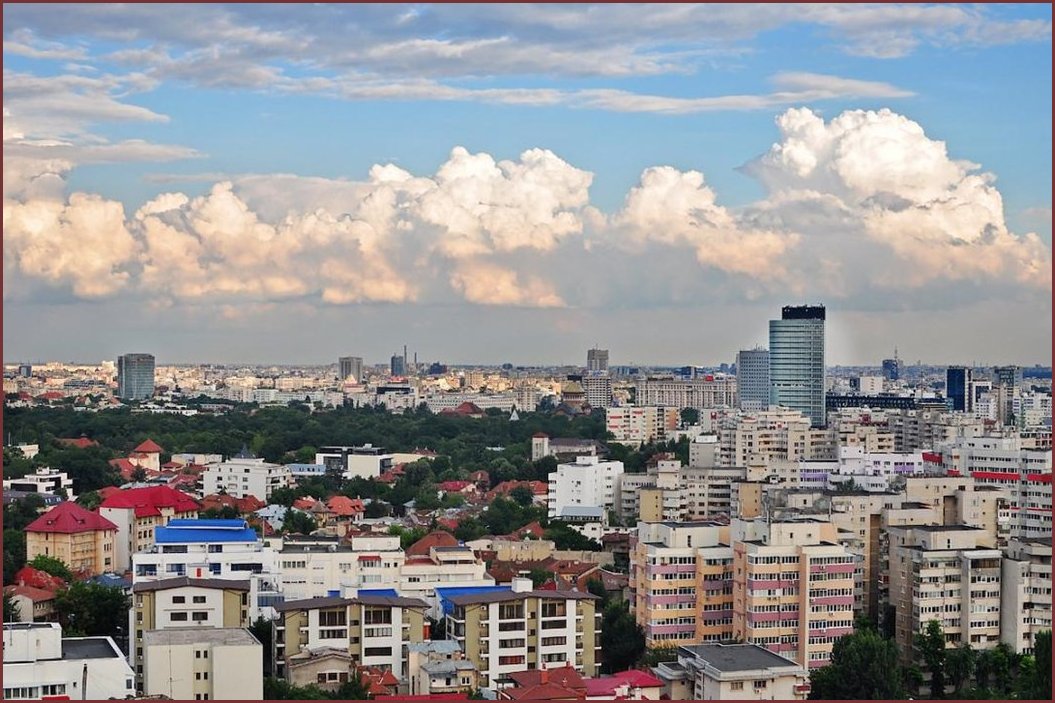
Based on these factors, cities are scored from 0 to 100. The Numbeo report is even more significant when you consider that just over half of the world’s population now lives in cities.
Cluj-Napoca scored 77.7 out of 100 and currently ranks 23rd, being considered a safer city than places like the Dutch cities of Eindhoven (26th) and Groningen (25th), and even Iceland’s capital, Reykjavik (31st).
The other Romanian cities in the top 100 are Timisoara (30th), Brasov (54th), Bucharest (67th place) and Iasi (88th).
Romania’s capital surpassed other major European capitals in terms of security, such as Lisbon (75th), Madrid (76th), Amsterdam (82nd), Oslo (108th) and Budapest (120th).
The ranking notes that people in Bucharest enjoy a very high level of safety when walking alone during the day, 87.9 out of 100, and a high level of safety when doing the same at night. Crime levels, home burglaries, robberies, car theft, assaults, insults, assaults because of skin color, ethnicity or gender, drug trafficking and armed robberies are all low or very low in Bucharest. The only factor that scores high is corruption and bribery, 77.1 out of 100.
Abu Dhabi, the capital of the United Arab Emirates, ranked first with a score of 88.2.
For the sixth consecutive year, the UAE capital tops the list of safest cities in the world. Abu Dhabi is a city where most residents are from other countries, making thefts, kidnappings and burglaries very rare. Foreigners are deterred from committing crimes because they risk deportation. Both men and women can walk the streets during the day and night without any problems.
Doha ranks second in the list of safest cities in the world for the third year in a row. The city of Ajman, also in the UAE, came in third, followed by Taipei, the capital of Taiwan, and Sharjah and Dubai, both also cities in the UAE.
Caracas, the capital of Venezuela, ranks as the most dangerous city in the world, with a score of 16.6. Also dangerous are Pretoria, in South Africa (18.2), Durban and Johannesburg, also in South Africa (19.1 and 19.2, respectively), and San Pedro Hulas in Honduras (19.3).
Disclaimer

The newsletter of the Dutch Romanian Network is compiled with great care. The Dutch Romanian Network cannot accept any liability for a possible inaccuracy and/or incompleteness of the information provided herein, nor can any rights be derived from the content of the newsletter. The articles do not necessarily reflect the opinion of the board.
